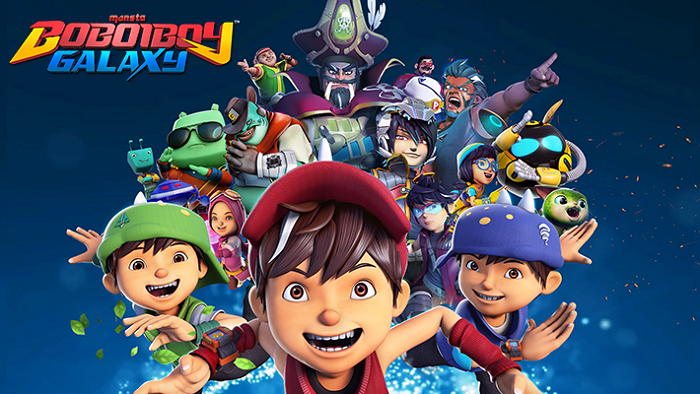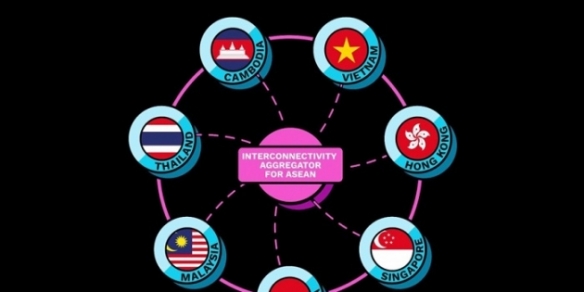E-Nation Symposium: Maximising the potential of creative entrepreneurship starts with good IP, and adapting towards a digital age
By Tan Jee Yee November 29, 2019
- Creating and having own IP is key to monetisation
- There is need to adapt towards digital age, digital channels

Creative entrepreneurship (that is, entrepreneurship within the creative industry such as films and music) may sound like a risky endeavour, but like all forms of entrepreneurship, it has its potential.
Sure, it’s hard to nail a winning formula – we all can’t just set up an animation company and expect it to become the next Disney, after all – but it’s not to say that there aren’t ways to maximise that potential, and perhaps find success within the world of telling stories.
That’s the basis to a forum held during MaGIC’s E-Nation Symposium on “Maximising the Potential of Creative Entrepreneurship in Malaysia.”
Held on Nov 2, the panel was moderated by Cultural Economy Development Agency (CENDANA) founding chief executive officer Izan Satrina, with big names within Malaysia’s entertainment industry as panellists – namely Animonsta Studio’s chief executive officer Nizam Razak, KRU Studios executive president and group CEO Norman Abdul Halim and National Film Development Corporation Malaysia (FINAS) chairman Hans Isaac (a well known actor-producer-director).
At the moment, it would seem that the market is ripe for the taking. Isaac notes that there are currently many ways to monetise content, as we no longer need to solely rely on traditional means of distribution. Rather than merely focus on theatres and TV, creators can distribute digitally or even approach digital distributors like Netflix.
This also means that it’s now time Malaysian creative entrepreneurs think outwards. “Now is time to move out of the [local] market, to create a bigger ecosystem. You can monetise in so many ways these days – there are so many platforms.”
Building brands and characters
Nizam Razak certainly did, with Animonsta’s primary franchise BoBoiBoy. Despite airing on national television, Nizam made the decision to upload full episodes of the long-running animated show on YouTube – a move that is considered both unusual and risky.
It paid off. The view-count for each episode numbers in the millions (the highest being 47 million views), providing Animonsta with an additional revenue channel as well as being able to reach a wider audience.
BoBoiBoy would be one franchise that current and aspiring creative entrepreneurs can try to emulate, if not learn from. While the TV show and its two movies form the basis of the franchise, BoBoiBoy spans different mediums and has about 500 products in merchandise.
According to Nizam, Animonsta is not merely an animation studio. “People tend to call us an animation company. We’re not – we’re a character company. We create characters, and we represent characters. From these characters’ popularities, we’re able to make and license merchandises.”
Adding to this, Nizam says that building brands is one way to ensure relevance in the industry. “What are the biggest movies of this year? That will be Avengers: Endgame and Joker,” he points out – both, of course, are movies from existing brands and franchises. “Look at why Disney bought Star Wars. You get the IP, but what you’re actually buying is the fans.”
Ultimately, however, creative companies will need to create content that people can relate to. Local TV stations may wonder why they should purchase your content if they can just as easily air popular international ones. “But I say to them, local sentiments matter. But it has to come with quality and consistency,” Nizam says.
Adapting to change
Isaac agrees that a winning business model in the creative industry starts with owning your own intellectual property, rather than working to create for others. But there’s also a need to create IP that can travel beyond Malaysia. One way to ensure that is through language.
Recounting a meeting with famed director Oliver Stone, Isaac was told that one reason Malaysian content can’t “move up” is language. Malaysian animation products can travel, for instance, because its creators can alter the language for different regions at a minimum cost.
FINAS, which help provide funding for local films, can essentially aid in developing different versions of a film or show that can be exported to other countries. “We have to protect national language and culture, but we ask you to take the initiative to create [an] international version. That’s the way forward,” he says.
Norman Abdul Halim of KRU Studios says that a key question for creative companies is how to get market access and territories. “The key to this is big data, IoT, AI and so on,” he says.
Norman notes that we’re currently approaching Industrial Revolution 4.0, which sees a need for companies to structure new business models based on technology. “Together with technology, content and also platforms, we will be able to not just help ourselves, but help the industry,” he says.
From here, the creative industry no longer need to be dependent entirely on traditional means of distribution. At the same time, creative entrepreneurs are dealing with buyers through digital platforms. Content creators can put their videos on platforms like Vimeo, and interested buyers can view these content and directly offer to the creators.
He believes it’s vital to change oneself, adding that KRU Studios is also in the midst of changing to address new problems within the industry.
Contrary to conventional wisdom, Norman also says that, when it comes to content, it need not be expensive in order to be successful. As YouTube has proven, a person with a single webcam can produce content reaching millions of viewers. But there also needs to be focus on what’s important in content creation – a good story.
“Storytelling is most important. Characters may be important to create the image of the IP, but if you have a great design but poor story, it’s not going to travel,” he says.
Creative entrepreneurs can ultimately start small, through mediums like graphic novels or e-books that don’t require a lot of funding to start. “Once you have the numbers, you can back that up and pitch to agencies. That’s how you go forward,” Norman advises.
It would seem that, fundamentally, creative entrepreneurship is no different from other forms of entrepreneurship. What matters most, in the end, is a good product. That’s where you start.
Related stories:
E-Nation Symposium: All entrepreneurs are tech entrepreneurs
E-Nation Symposium: It takes a nation to build successful businesses
E-Nation Symposium: Entrepreneurs make the best entrepreneurship teachers


